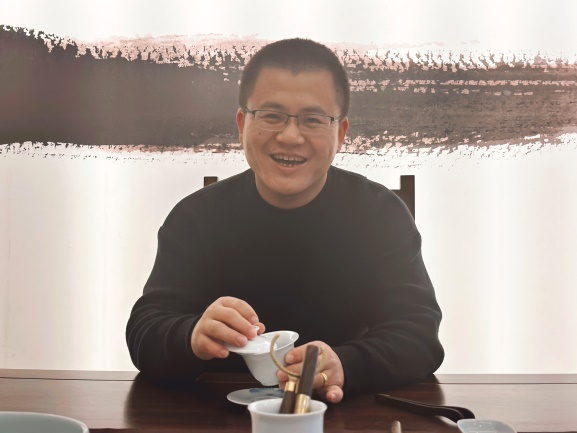
李占明,博士(2016年毕业于浙江大学),副教授,硕士生导师,九三学社社员,新加坡国立大学访问学者,江苏省双创博士。
E-mail:lizhanming@just.edu.cn
联系电话:18868180268
欢迎专业为食品、计算机、机械、生物等专业的本科生联系报考硕士研究生(食品与营养(专硕),食品科学与工程(学硕))
(No positions available for doctoral students and post-doctoral researchers)
工作经历
江苏科技大学 粮食学院食品质量与安全系 2020.04 — 至今
新加坡国立大学 食品科学技术系 (访问学者) 2018.03 — 2019.04
中国计量大学 生命科学学院食品质量与安全系 2016.03 — 2020.04
新加坡国立大学 食品科学技术系 (联合培养) 2015.09— 2015.12
科研情况
近期主要从事食品品质智能感知技术、食品溯源分析与化学计量学、食品加工与质量控制等方向的研究工作;参与或主持国家级、省部级、企业委托课题等科研项目多项。已在《Journal of Hazardous Materials》、《Environment International》、《Food Chemistry》、《Food Chemistry: X》、《食品科学》等行业权威SCI/EI期刊发表论文40余篇。兼任浙江省科技项目专家库专家、中国化学会会员、中国食品科学技术学会高级会员;受邀担任《Journal of Food Measurement and Characterization》副主编、《Journal of Future Foods》编委、《Food Science and Human Wellness》青年编委、《Foods》期刊客座编辑等;受邀担任《Food Chemistry》、《Food Science and Human Wellness》、《Journal of Future Foods》、《LWT-Food Science and Technology》、《Journal of Food Measurement and Characterization》、《食品科学》等多本SCI/EI期刊的审稿人。
荣誉及获奖情况
1. 2018年荣获校级优秀班主任
2. 2018年中国国际科普作品大赛三等奖(指导教师)
3. 2019年亚太数学建模竞赛三等奖(研究生组,指导教师)
4. 2020年度迅杰光远杯近红外光谱优秀学术论文提名奖
5. 2021、2022年度《食品科学》优秀审稿人
6. 2021年第三届果蔬类功能食品开发及产业发展大会会议论文一等奖
7. 2022全国大学生生命科学竞赛三等奖(指导教师)
8. 2022年度中国商业联合会科学技术奖三等奖(排名第三)
9. 2022年度本科生优秀毕业论文(指导教师)
10. 2022年度E方知库年度优秀论文奖
11. 2023年荣获铭和奖教金
12. 2023全国大学生生命科学竞赛二等奖(指导教师)
13. 2023本科生优秀毕业设计团队(第一指导教师)
14. 2023全国大学生生命科学竞赛三等奖(指导教师)
15. 2024年江苏省优秀本科毕业论文(设计)(指导教师)
16. 2024年全国商业联合会科学技术奖二等奖(排名第四)
17. 第十九届挑战杯—2024揭榜挂帅专项赛二等奖(第二指导教师)
18.《食品科学》、《Food Science and Human Wellness》2024年度优秀审稿人
近期发表的部分科研论文
1. Yu, et al. (2025). Quantitative predictions of protein and total flavonoids content in Tartary and common buckwheat using near-infrared spectroscopy and chemometrics. Food Chemistry 462, 141033.
2. Yu, et al. (2025). Near-infrared spectroscopy combined with support vector machine for the identification of Tartary buckwheat (Fagopyrum tataricum (L.) Gaertn) adulteration using wavelength selection algorithms. Food Chemistry 463, 141548.
3. Wang, et al. (2024). The combination of near-infrared spectroscopy with chemometrics in achieving rapid and accurate determination of rice mildew. Journal of Food Measurement and Characterization 18, 5437-5449.
4. Song, et al. (2024). The identification of aged-rice adulteration by support vector machine classification combined with characteristic wavelength variables. Microchemical Journal 199, 110032.
5. Chai, et al. (2023). Identification of common buckwheat (Fagopyrum esculentum Moench) adulterated in Tartary buckwheat (Fagopyrum tataricum (L.) Gaertn) flour based on near-infrared spectroscopy and chemometrics. Current Research in Food Science 7, 100573.
6. Li, et al. (2023). Identification of aged-rice adulteration based on near-infrared spectroscopy combined with partial least squares regression and characteristic wavelength variables. Food Chemistry: X 17, 100539.
7. Li, et al. (2023). Unique roles in health promotion of dietary flavonoids through gut microbiota regulation: Current understanding and future perspectives. Food Chemistry, 399:133959.
8. Wu, et al. (2023). Identification of Tartary buckwheat (Fagopyrum tataricum (L.) Gaertn) and common buckwheat (Fagopyrum esculentum Moench) using gas chromatography–mass spectroscopy-based untargeted metabolomics. Foods, 12(13), 2578
9. Li, et al. (2022). Novel MOFs in-focus detection and adsorption cues for environmental pollutants. Reviews of Environmental Contamination and Toxicology, 260(1), 1-18
10. Yu, et al. (2022). Orientin and vitexin attenuate lipopolysaccharide-induced inflammatory responses in RAW264.7 cells: A molecular docking study, biochemical characterization, and mechanism analysis. Food Science and Human Wellness 11, 1273-1281.
硕士招生专业:食品与营养(专硕),食品科学与工程(学硕)
欢迎本科为计算机、食品相关、机械等专业的本科生联系报考。
(No positions available for doctoral students and post-doctoral researchers)
